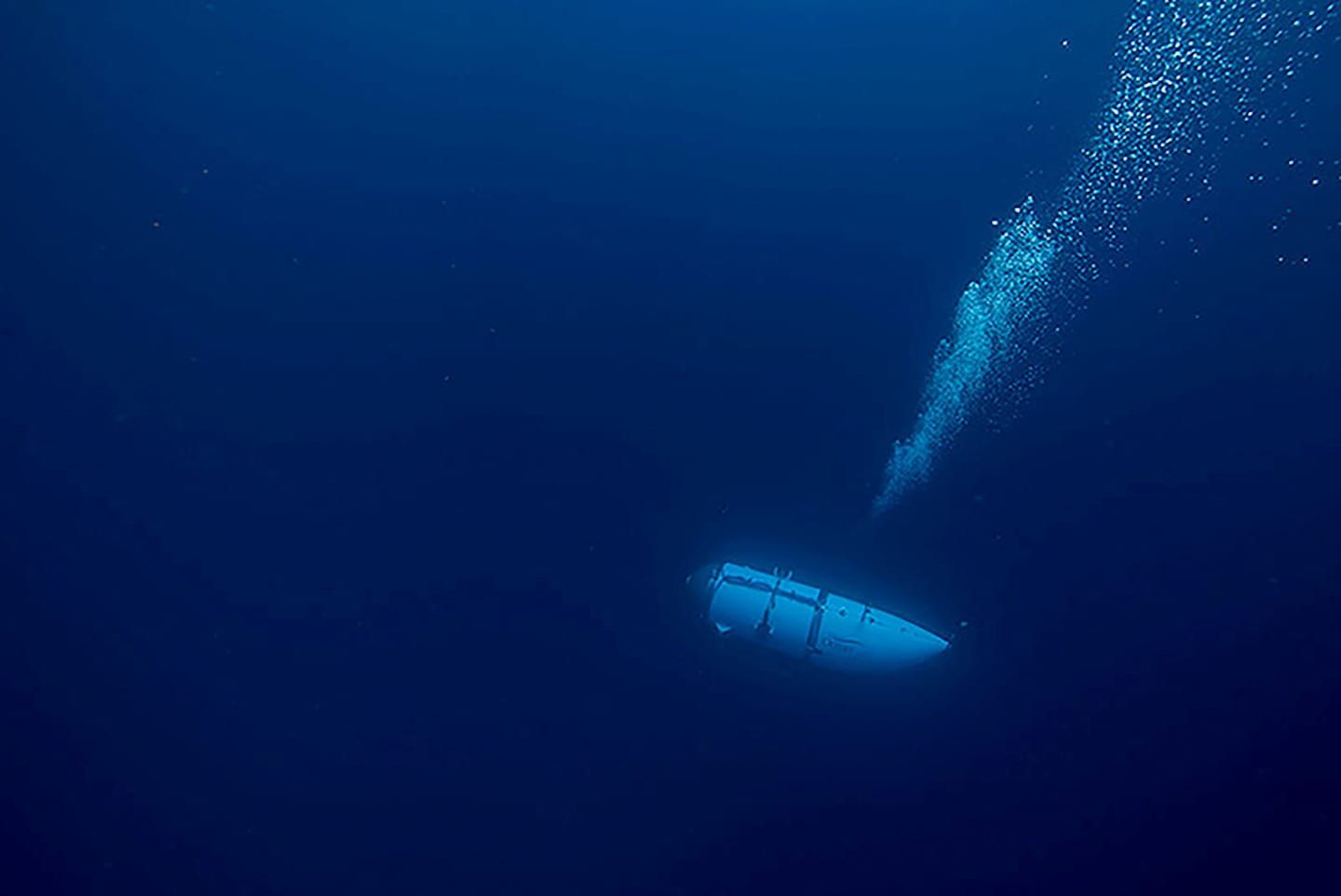When will the Coast Guard end its search for Titan submersible?
Listen 4 min Comment on this story Comment Gift Article Share
The tyranny of time, physics and distance now defines the fast-closing window of opportunity to rescue five people in a submersible lost in the Atlantic, and experts foresee that a tough choice is near. Wp Get the full experience. Choose your plan ArrowRight A multinational fleet of ships and planes is combing a patch of frigid ocean twice the size of Connecticut for any sign of the craft known as Titan. Its pilot and four-person crew, enthusiasts who jammed into a titanium and carbon fiber cocoon for the two-mile dive to witness what remains of the Titanic, are believed to have less than 24 hours of oxygen remaining. And no one knows if the vessel is on the water’s surface, on the seafloor or somewhere in between.
The outlook is bleak, onlookers agree.
“I would call it ‘Mission impossible,’” Paul Zukunft, who once led the U.S. Coast Guard, said in an interview Wednesday as officials overseeing the effort described having detected the sound of “banging” that rescuers were nevertheless unable to positively identify as distress signals. It could be merely phantom noises bouncing through the vast sea.
Advertisement
“Given the limitation of time,” Zukunft added, “it really makes it an impossible mission to carry out.”
The haunting reality is that only so many resources can pool together quickly enough, in such a remote and inhospitable part of the ocean, to pull off a miracle.
Zukunft, who led the Coast Guard from 2014 to 2018, said it is highly unlikely a vessel could be pulled to the surface from such a great depth without significant resources having been staged in advance.
“The Coast Guard’s default,” he said, “is we will always launch for safety of life at sea — and always holding out hope that they do rise to the surface, we launch a rescue swimmer, and they’re all recovered and live to see the next day.”
The Coast Guard is responsible for search-and-rescue missions stretching out about 1,000 miles from the U.S. shore, with the search zone for Titan falling just inside that. The Navy handles recoveries when aircraft or ships sink to the seabed.
A submersible with five people onboard vanished while exploring the wreck of the Titanic on June 18. Here's what we know so far. (Video: Jackson Barton/The Washington Post)
Navy officials have dispatched a specialized winch system, called the Flyaway Deep Ocean Salvage System, or FADOSS, that can recover heavy objects as deep as 20,000 feet — well beyond the depth of the Titanic. But before it can be employed, a remotely operated vehicle first must locate the missing submersible.
Advertisement
And even then, the system has to be welded onto a viable boat, a process that requires 24 hours of nonstop work, a Navy official told reporters Wednesday, speaking on the condition of anonymity under ground rules set by the service. That boat has not been chartered, the official said, putting the winch’s availability beyond the submersible’s estimated air supply.
The official did not know if the system has been used to save a human life — only that it was designed to recover objects.
An operation of this magnitude could run into the millions of dollars between costs for fuel, personnel and maintenance. But the company involved will not be responsible for reimbursing the government, Zukunft said.
“It’s no different,” he said, “than if a private citizen goes out and his boat sinks. We go out and recover him. We don’t stick them with the bill after the fact.”
The incident could, however, lead to new legislation and regulations. There’s a long history, the retired admiral said, of tragedies at sea leading to new laws that are “written in blood.” He cited as examples the regulation of steam boilers on vessels in the 1800s after a series of explosions that killed passengers and the requirements for the number of lifeboats a vessel must have after the Titanic sank in 1912.
Zukunft predicted that a difficult decision must be made Thursday, as the Titan’s 96 hours of oxygen expires. At that point, he said, the company that owns Titan, OceanGate, must make a call on what kind of salvage and recovery operation it wants to pursue at its own expense.
Advertisement
“There’s a huge humanitarian piece to this when we have a vessel missing at sea,” Zukunft said. “Loved ones start calling into the Coast Guard and saying, ‘Can you give us an update?’ And we’ll give them regular updates on each mission, and if they want, we can even show them the patterns we’re searching and every effort being expended to saved their loved ones.”
The service will typically share with family members when they are suspending a search before announcing the decision.
“We don’t want to find out in a newscast that the Coast Guard has pulled the plug on a search effort,” he said. “And then we make the call to suspend.”
Gift this article Gift Article
Source: The Washington Post


